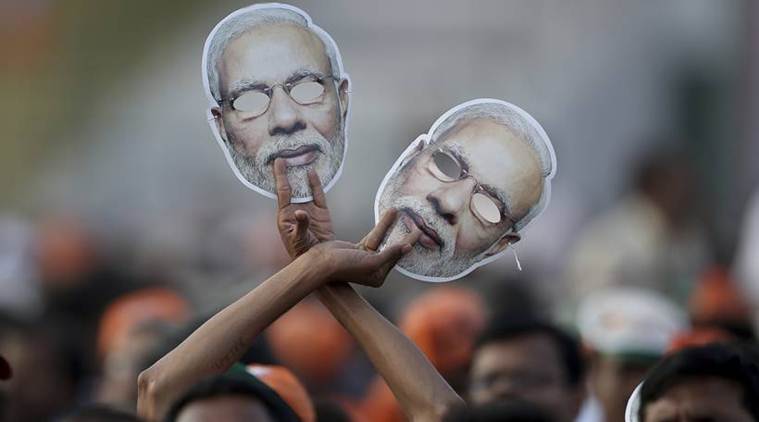
Election season is underway in India. The Indian voter has been greeted with a slate of electoral promises. From promises of minimum income transfers to astronomically high spending on infrastructure to promises of sustained government job creation, the voter has heard it all, and from all. At some level none of this is new. It happens every election cycle. And therein lies the tragedy for the Indian voter.
In the late 1960s, the debate on the appropriate strategy for battling poverty in India had two opposing arguments. On the one side were those who believed that redistribution of resources to the neediest sections of society was key to unleashing economic growth. This group advocated an aggressive policy of redistribution through myriad social welfare schemes and an ever increasing collection of protectionist policies directed to help the small, the agrarian, the exporter, the import competitor, etc.
On the other side were those who argued that growth would lift all boats. Without growth there was not much to redistribute. Hence, a development model based on state-directed allocation of resources would not deliver any sustained deliverance from poverty and underdevelopment. This group believed that the way to unleashing growth was to free up the private sector and human enterprise.
The first group won the battle and India, under Indira Gandhi, dived into a state-led, redistribution heavy development model. The second group however won the war. As is well recognised now, the liberalisation of the early 1990s unleashed a phenomenal growth pick-up. From struggling to rise above two per cent a year, per capita income growth over the last two decades has routinely exceeded five per cent a year.
Even more impressive is the scale of the intellectual victory of the second view on achieving improvements in human welfare. This has happened on account of growth lifting all boats. In a sequence of papers with Viktoria Hnatkovska, we have found a sharp decrease in education gaps, wage gaps and consumption gaps between scheduled castes and tribes (SC/STs) and non-SC/STs in India since 1983. Today, the wage gap between a typical African American or Hispanic worker and a white worker in the US is greater than the wage gap between a typical SC/ST and non-SC/ST worker in India.
Interestingly, occupation choices of SC/STs are becoming similar to those of non-SC/STs. Perhaps the most uplifting bit is that children of SC/ST parents are improving their outcomes relative to their parents at a faster rate than non-SC/ST children in education and wages. In other words, inter-generational mobility rates of SC/STs have surpassed non-SC/STs.
The same pattern of declining disparities in outcomes can also be found between the average rural and urban worker, as well as between the typical female and male worker. These are outcomes to be proud of for all Indians. They are also a loud testament to the correctness of the views of people like Jagdish Bhagwati in the 1960s as well as the political courage of the then Prime Minister Narasimha Rao for ushering in liberalisation.
Before economic liberalisation, labour and capital would get stuck in relatively unproductive uses. By reforming the industrial licensing regime, opening up the country to trade, and encouraging foreign investment, the reforms released these resources to be allocated to their most productive use. The Indian growth pick-up can thus be viewed as a one-time reassignment of productive resources to their best use.
To sustain its growth story, India now desperately needs a next generation of reforms. Amongst the most important ones are land and labour reforms to encourage manufacturing to scale up. This will soak up the dramatic addition to the labour force that is happening every year and provide effective demand for the existing and ongoing infrastructure investment.
Two decades though are a long time in the collective memories of both politicians and the public. People appear to have forgotten the main lessons of the liberalisation experience. We are seeing a creeping return of the pre-reform mindset. The response to current account imbalances is to raise import duties. Import substitution policies are being openly spoken about. Redistribution schemes are being proposed to help the poor and the rural farmer fight sectoral distress. Indeed, there appears to be competitive populism in promoting these programmes across the political spectrum.
A primary reason for rural distress is that there are too many people engaged in agriculture. Fifty per cent of workers are engaged in agriculture but they produce less than 15 per cent of Indian output. Handing these struggling farmers monthly or quarterly handouts of cash isn’t going to solve their problem. Rather, it is akin to keeping the patient alive with oxygen.
The cure for rural distress is to provide agricultural workers with better options in large-scale, low-tech manufacturing. But that requires hard political choices to allow for labour, land and regulatory reforms. It is much easier instead to promise handouts since these don’t even require a detailed accounting of where the money shall come from.
A key lesson of liberalisation was that growth lifts all boats. To unleash sustained growth, the private sector and private enterprise have to be encouraged. Crucially, the government has to retreat from people’s lives. Indeed, its ubiquitous presence is often the source of the problem.
India today appears to be returning to an overarching focus on managing demand through myriad government schemes. The neglect of the supply side during the pre-reform years is gradually returning. It would be tragic if we fail to learn from our own history, especially given the country’s huge potential.
(The writer is director, Centre for Advanced Financial Research and Learning, Mumbai and professor of Economics at the University of British Columbia. Views are personal)